By Josh Raymer
Not all gifted kids look the same.
People often have preconceived notions of what these children should look like and how they should act in school: They’re the whiz kids who tackle calculus in sixth grade or ace every test without trying; their destinies lie in medicine, computer engineering, finance, technology, or the — gold standard for genius achievement — rocket science.
But looking at all gifted kids as “rocket scientists in training” is painting with far too broad a brush. There are actually five commonly-recognized areas of giftednes: general intellectual ability, specific academic aptitude, creativity, visual/performing arts, and leadership. School districts in Kentucky, and many other states, are required to identify and provide services for students with each those five gifts. The 25 classes offered during the Summer Camp for Academically Talented Middle School Students (SCATS) are designed to meet the individual needs of students identified as gifted in any of those five areas.
General Intellectual Ability

These students demonstrate intelligence in many ways. They get excited about new ideas, use a large vocabulary, process information in complex ways, enjoy thinking in abstractions, and display an inquisitive, observant nature. They are often described as precocious and might have an advanced sense of humor.
A class like Technology-Based Research Projects meets the needs of these gifted learners by requiring a wide variety of skills and allowing students to bring in their own interests and specialties. Students spend the two weeks in Jessica McLean’s class focusing on presentation skills using technology and create presentations based on an area of personal interest. That freedom creates excitement among classmates.
“These students come in and they’re just so ready to learn every day,” Jessica revealed. “They’re intrigued by what they’re doing and they help each other out. It’s like a community of learners pushing each other to learn more.”
Student choice also leads to better projects. Rhiannon Wilson of Morgantown is researching her favorite band, 5 Seconds of Summer. To complete her project, she must know how to use a computer, type up notes, properly research, and use iMovie, Prezi, or Google Sites to create her presentation. Rhiannon said she enjoys the challenge.
“It’s awesome because we usually don’t get to do this in school,” she said. “You’re given a subject, and that’s what you’re supposed to do, like a PowerPoint over the American Revolution. Here you can do an iMovie on your favorite band. It’s a lot of fun.”
Zain Hammad of Bowling Green decided to tackle a more technical subject: the basics of string theory. “For the past couple months, whenever I got bored, I found myself reading about theoretical physics and string theory, which is big in that field right now,” Zain explained. “I thought it’d be interesting to make a project about it.”
Jessica said her class is just one of many at SCATS that challenge learners gifted in the area of general intellectual ability. “If a kid is interested in anything, there’s a class here for them,” she said. “There are classes in specialty areas where kids might be gifted, but there are also classes that allow them to step outside their comfort zone and try something new.”
Specific Academic Aptitude
These learners have advanced knowledge and achieve high academic success in one or two subject areas. They have excellent memory and recall, and pursue their special interest with enthusiasm and vigor. They’re responsible and studious.
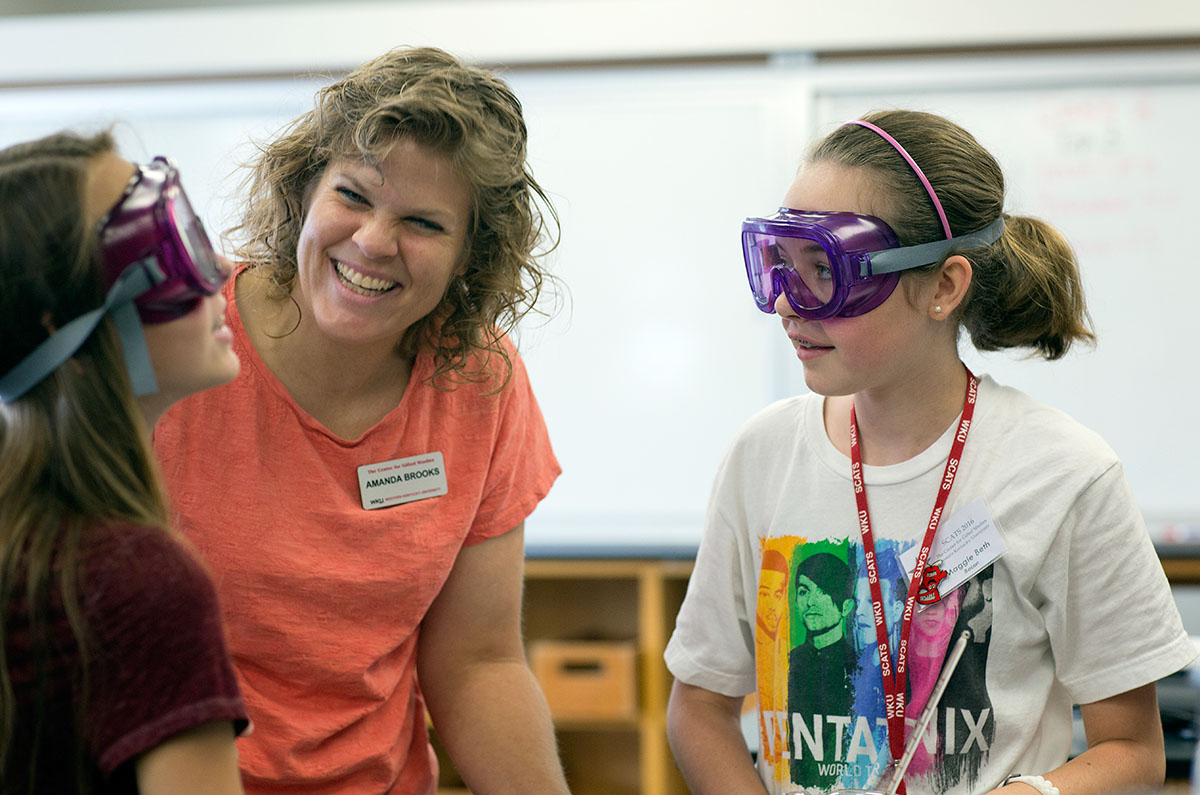
Students gifted in this area with a special interest in chemistry had the ability to take the class Chemistry of Everyday during any of the four periods. Taylor Galavotti is from Lexington and wants to be a neurologist when she grows up. In addition to the chemistry class, she’s taking a problem solving class, a writing boot camp, and a class devoted to Harry Potter.
“When I told my parents I wanted to do this, they said I should make it as much like a college experience as possible,” Taylor recalled. “So I wanted to get a wide variety of classes, and everyday chemistry sounded like what we do in our science classes in school.”
Her favorite activity so far has been making homemade ice cream. Unlike when she did the activity in school, instructor Amanda Brooks actually explained why the process resulted in the creation of ice cream. It also helped that the ice cream they made was delicious!
When Josh Ciaburri of Louisville surveyed the SCATS class list, chemistry stood out as an option because he couldn’t take it as a seventh grader at his school, and he felt the course would challenge him in ways some other classes couldn’t. His favorite part of the class was taking a tour of Snell Hall, the science building on WKU’s campus. “I got to see all the cool stuff that I’ll get to learn about and do when I’m in college,” he said.
Creativity
Gifted children in this area do not mind being different from the crowd and will improvise often. Their independent thinking makes them natural inventors and creators. Highly creative kids are good at finding unusual ways to solve problems, which makes them a perfect fit for Lyndsey Duke’s class, Creative Problem Solving, and all its “outside the box” challenges.
“We solve problems every day, so I want the students to look outside that box at how to solve their problems more creatively,” Lyndsey explained. “A lot of people solve problems simply. Employers nowadays are looking for not only simple solutions, but realistic ones in terms of execution and innovative ones that the company can build from.”
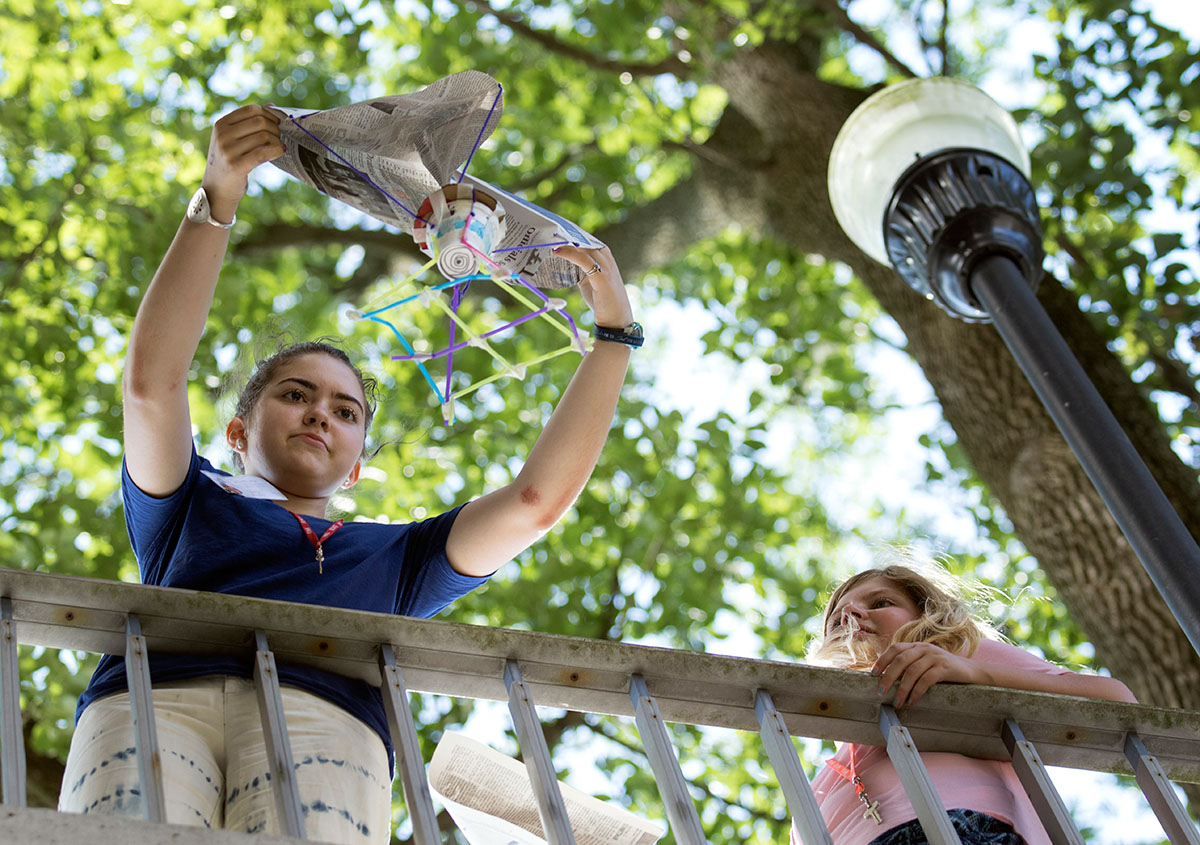
What approach do you take when tasked with building a structure out of drinking straws that must support two tennis balls (standing in for people) and look like a structure that someone would actually want to buy? What steps do you take when designing a balloon-powered car?
These are some of the challenges students have tackled in Creative Problem Solving. As Sarah Able of Cleveland, Tennessee, puts it, “If your solution is normal, you’re probably not doing it quite right.” Sarah signed up for the class because she wanted to learn how to think differently. Unlike some classrooms, the ones at SCATS are safe places to keep tossing out different solutions.
“You can go over the answer as many times as you want without getting stares,” said Quenten Morgan of Berea. “You feel at home here, and you can think about the problem for a while.” There were a number of reasons Quenten was drawn to a problem solving class: “I’m not the best outside the box thinker, and I want to improve in that area. My friends and my sister have come to SCATS and taken this class, and they loved it. I knew I had to try it.”
Quenten, Sarah, and their classmates aren’t just tackling hypothetical problems in class. They’re also looking at how to solve problems in their hometowns. As a member of the technology club and the musical team, Sarah has created a website where club members at her school can request a club sponsor or new equipment. Quenten has designed fundraisers to pay for new water fountains and hopes Berea College will join his cause.
Make no mistake – these campers are learning life skills at SCATS.
“I asked a student what he’s learned and he said, ‘I might not use all the skills right now, but, in the future, I’ll be able to come up with multiple solutions and create something,’” Lyndsey said. “That’s impressive because kids can get stuck on the first solution. Life is not a multiple choice test, and this class has shown how several perspectives can come together to solve a problem.”
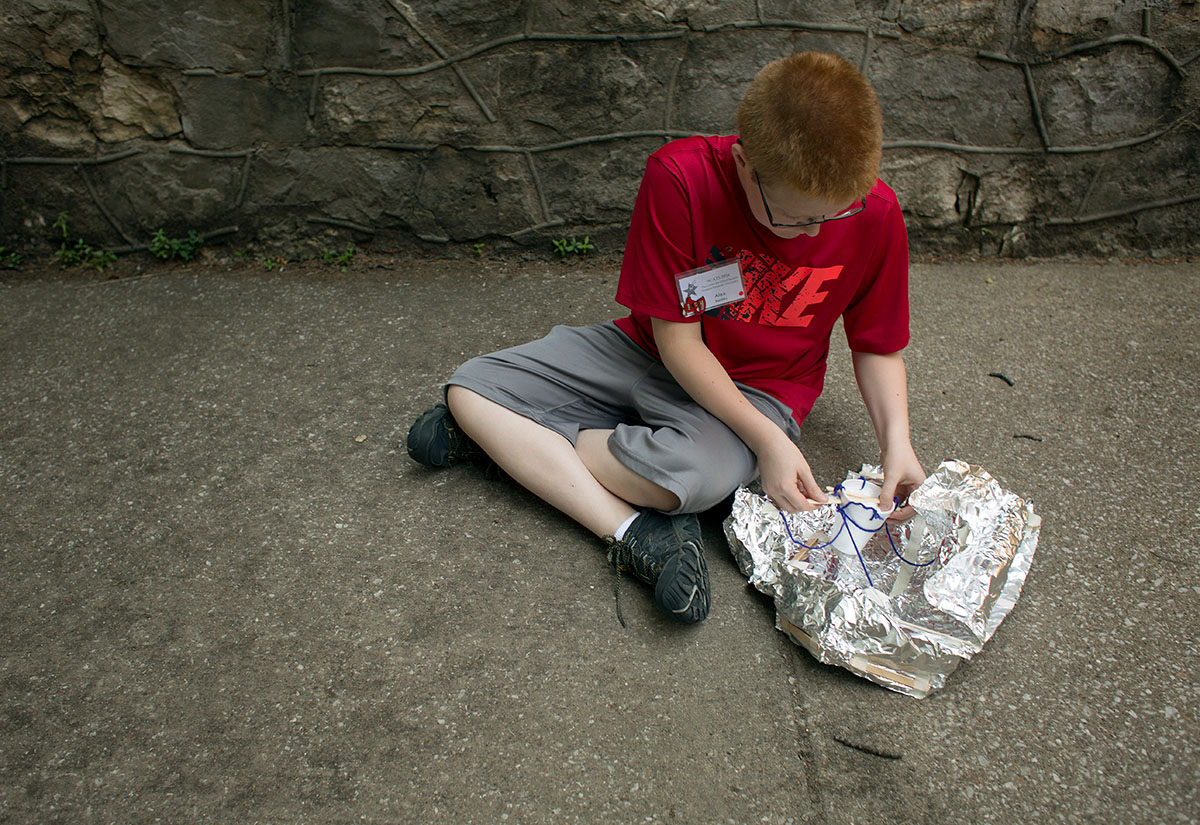
Visual/Performing Arts
This area is for learners who excel at expressing themselves through dance, drama, music, or art. They possess an outstanding spatial awareness and good motor coordination. Their creative expression goes beyond mere copying to original content creation. One advantage of students gifted in this area is that the arts can be a lens to explore other subjects.

“Although valuable in its own respect, music can be used to teach other things,” said Singing 101 teacher Ellie Osborne. “You explore history through music. Music theory teaches valuable cognitive skills. Music is basically math; it dives into all these different subsets. Music also makes us human. It’s that artistic outlet that helps you grow.”
Some students in Ellie’s class have no prior experience with music. As gifted children, Ellie said, they possess the confidence to try something they’re not already good at. Other students, like Russellville’s Evie Ellis, are in choir at school and want to improve their skills at SCATS.
“I take choir at school, but it’s an optional class,” Evie said. “Students who aren’t as invested in the class can disrupt the learning environment. SCATS is a more focused experience.”
It should come as no surprise that Evie also has Debate, Writing Boot Camp, and Chemistry of Every Day on his schedule since students gifted in visual/performing arts develop skills that translate to success in other areas. Ellie witnesses this firsthand at her school. “I teach high school usually, and most of my kids are in AP classes and excel in extra curricular activities. Musical aptitude definitely crosses boundaries.”
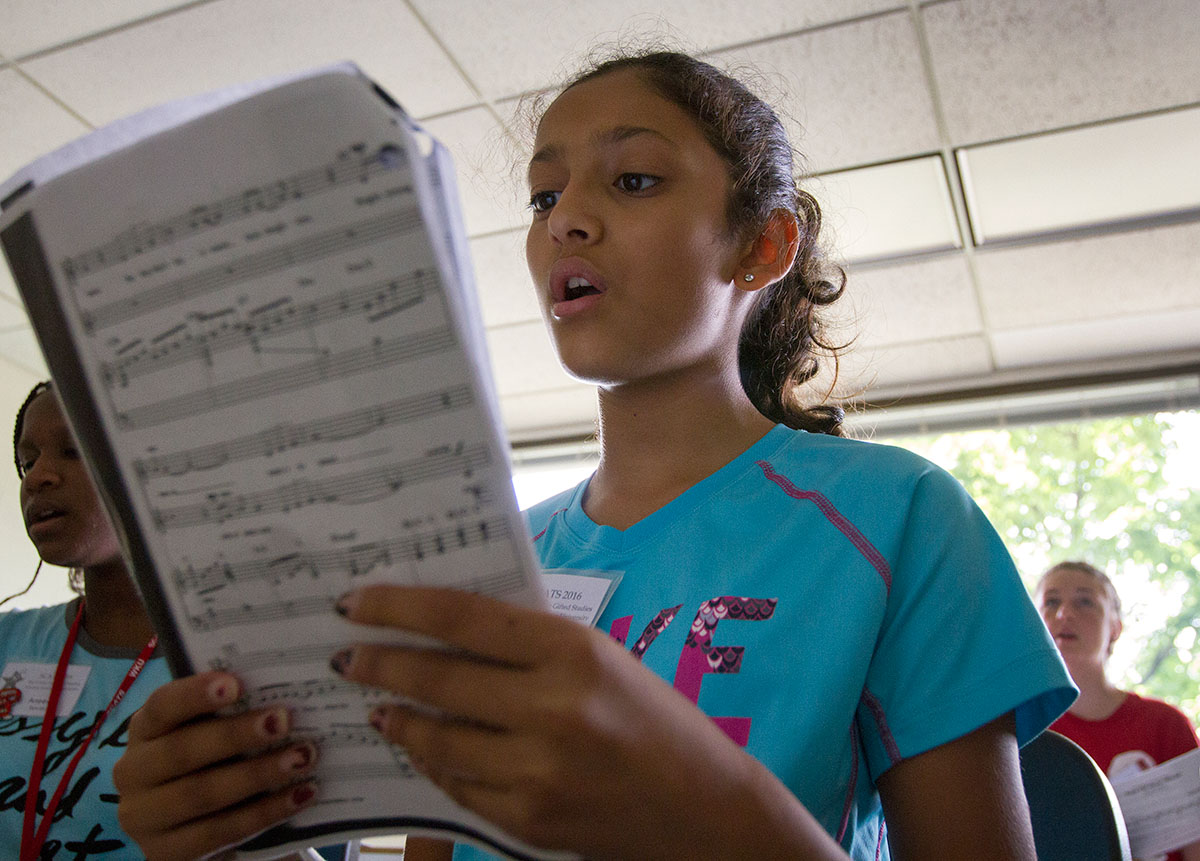
Leadership
Students with leadership ability are excellent decision makers who seek out responsibility and set high expectations for themselves and others. They are self-confident, organized, and well-liked by their peers. They can foresee consequences and implications of their decisions. Leaders display concise self-expression and should be adept at public speaking.
Kevan Brown’s Public Speaking class helps students become more comfortable speaking what they feel. “The first step to effective communication is speaking in front of your peers in a safe environment,” Kevan said. “They’ve shared personal stories, which is not easy to do.”
Rather than making the class a straightforward “speech and debate” experience, Kevan has eased the students into public speaking with games and some theater-based activities. “You take this class to improve your skills and learn the power of good communication,” he explained. “You need it for job interviews and talking with family members. You can accomplish so much more with good communication skills.”
As a member of the Kentucky Youth Assembly and Kentucky United Nations Assembly, C.J. Johnston of Leitchfield knew Public Speaking was a class she had to take at SCATS. “One of my gifted areas is leadership, and I like speaking to other people. Plus, I know leaders need to be able to get their point across without relying on a sheet of paper and being all nervous.”
Iman Dashti of Louisville had his eyes opened to the work that goes into an effective speech. Pre-activities helped him break his speech down into five parts so that the final product would be concise and well organized. Given Iman’s dreams, he’ll need to continue working on his public speaking and communication skills well after SCATS is over.
“I never really liked public speaking because I wasn’t good at it,” he shared. “I want to get better at it because one day I hope to be the CEO of the World Bank in Germany. When there are changes to be made in a position like that, you must speak to coworkers and shareholders. If I want that job, then I would have to master public speaking. That’s why I came to this class.”
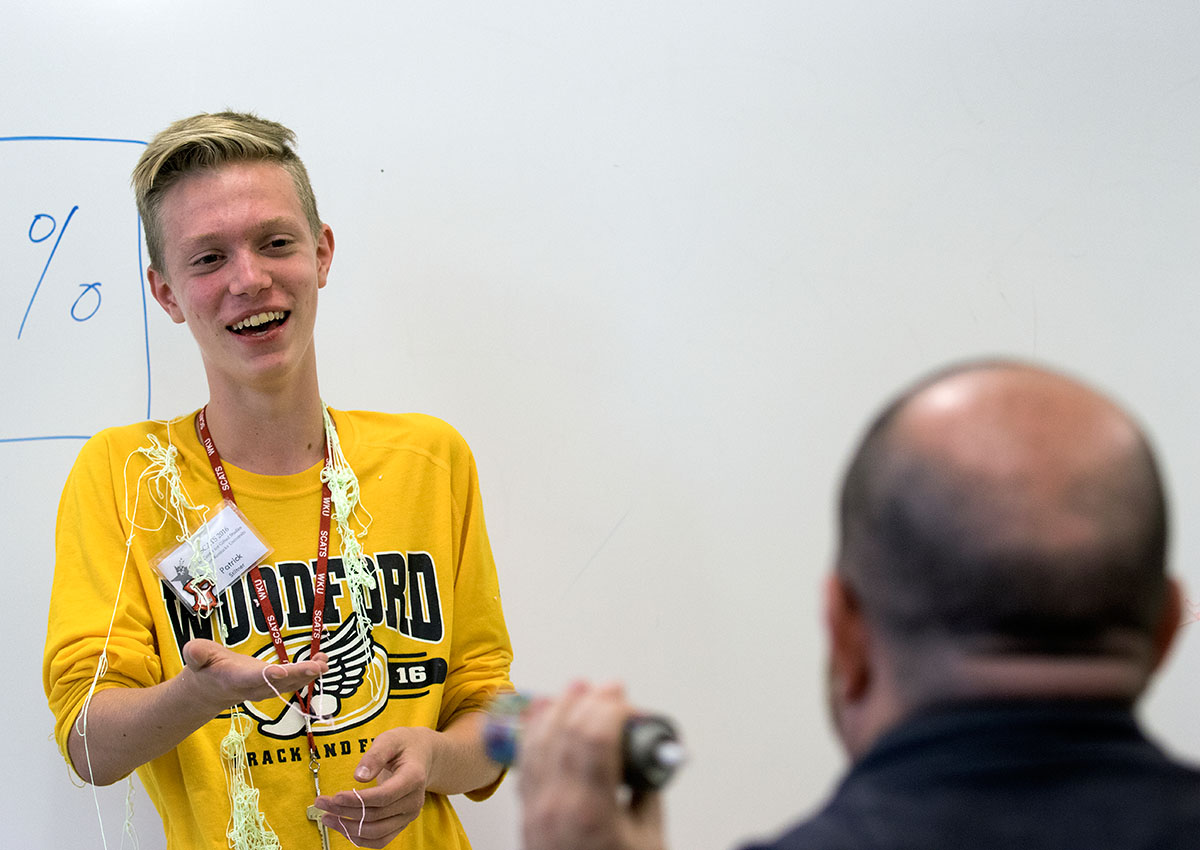
Sources: National Society for Gifted & Talented, Five Areas of Giftedness, Nurturing Our Future
